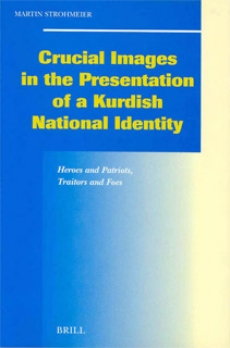| Éditeur : Brill | Date & Lieu : 2003-01-01, Leiden |
| Préface : | Pages : 268 |
| Traduction : | ISBN : 90-04-12584-1 |
| Langue : Anglais | Format : 136x220 mm |
| Code FIKP : Liv. En. 7126 | Thème : Histoire |
|
Présentation
|
Table des Matières | Introduction | Identité | ||
 Crucial images in the presentation of a Kurdish national identity : heroes and patriots, traitors and foes There is something particularly elusive about failed nationalisms and the sense of identity and rights which engendered them. The suppressors of separatist threats to their territorial and ideological integrity are not likely to dwell on such a confrontation or document its history. If the Kurds had managed to forge a nation-state in the aftermath of World War I, or at least to achieve a measure of recognition and legal status, then their early leaders would have been revered, their struggles for self-assertion glorified, significant texts intensely studied and canonized. As it is, we do not possess a great body of knowledge about early nationalist leaders, and the extensive studies of the Kurdish movement have understandably concentrated on the larger picture, on documenting and interpreting developments, and locating reliable sources in order to establish the relevant social and political facts. This study, however, is concerned less with how and why Kurdish nationalism did or did not “catch on” than with the efforts made by the Kurdish elite to construct a viable concept of Kurdish identity around which a we-group could consolidate that, in turn, would support secular and religious leaders in their aspirations. | |||||
| Preface A decade ago, while I was working at the Orient-Institut of the Deutsche Morgenländische Gesellschaft in Istanbul, I came across a small brochure in Ottoman with the title Kürdler Türklerden ne istiyorlar? (“What do the Kurds want from the Turks”?). It was the time following the Gulf War, when the plight of the Kurds in Iraq and their flight into Turkey had aroused world-wide attention, and the Kurdish question was being more openly discussed. I was intrigued by the booklet, actually an open letter, because it seemed to promise a historical reading of the Kurdish question. But I had no clue about the author, Dr. Mehed Sükrü. It took me some time to establish that the full name of the author was Dr. Mehmed Sükrü Sekban and to gather details about his life. A staunch supporter of the Kurdish movement from its inception at the turn of the 19th to the 20th century, Sekban withdrew from the movement in the 1930’s. He came to be considered a traitor by his former comrades. His bad reputation is probably the reason that his writings have been neglected. In this book I argue that he deserves scholarly attention. Nicosia, May 15, 2002 | ||||